Search Images
Browse Content (p. 1606)
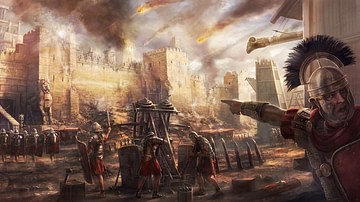
Image
Roman Artillery Attack
An image illustrating what a Roman artillery attack might have looked like. Centre is a ballista arrow-throwing device, in use between the 3rd century BCE and 4th century CE in Roman warfare.
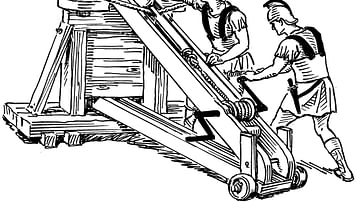
Image
Roman Stone-throwing Carroballista
The carroballista was a Roman artillery weapon which used torsion to propel bolts or stones over several hundred metres. They were in use from the 3rd century BCE to the 4th century CE.
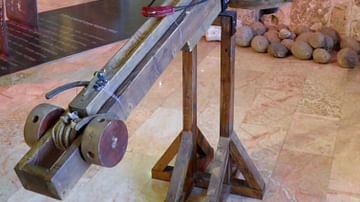
Image
Roman Ballista Reconstruction
The ballista was a Roman artillery weapon which used torsion to propel bolts or stones over several hundred metres. They were in use from the 3rd century BCE to the 4th century CE. This reconstruction is from the Hecht Museum, Haifa.
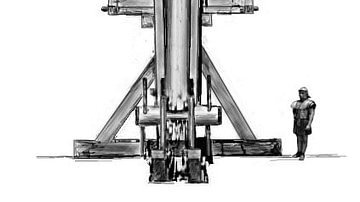
Image
Roman Ballista
The ballista was a Roman artillery weapon which used torsion to propel bolts or stones over several hundred metres. They were in use from the 3rd century BCE to the 4th century CE.
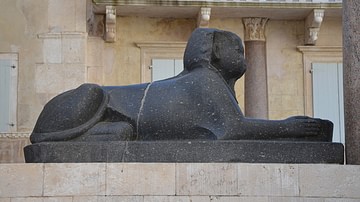
Image
Egyptian sphinx from Diocletian's Palace
Diocletian's Palace was decorated with numerous granite sphinxes originating from the site of Egyptian Pharaoh Thutmose III. Only three have survived the centuries. This one is still located on the Peristyle of Diocletian's Palace.

Image
Sumerian Votive Plaque
A votive plaque of white marble. The lower part shows two men carrying a large jar (probably filled with beer) and another man in front of them seems to steer an animal from behind, perhaps a cow or horse. At the upper part there are two...

Image
Basement halls of Diocletian's Palace
The basement halls of Diocletian's Palace were originally the supporting structures of the Roman emperor's residential quarters. They reflect the layout of the upper floor halls. Diocletian's Palace (Split, Croatia) was built at the turn...
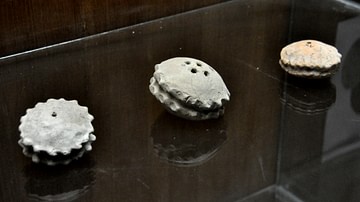
Image
Mesopotamian Ceramic Objects Used in Magical Liturgy
Three rounded ceramic objects with saw-teeth-like margins. They have small holes on both the ventral and the dorsal aspects. Upon moving them, a sound comes out as if there is a small object inside them. May have been used in religious settings...
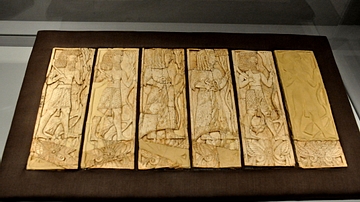
Image
Ivory Plaque from Nimrud (Ancient Kalhu)
This ivory plaque depicts six Assyrian worshippers in procession in six vertical rectangles. Note the details of their dresses. The men are bare-chested and wear kilts while the women wear a full dress. Both genders wear an impressive belt...
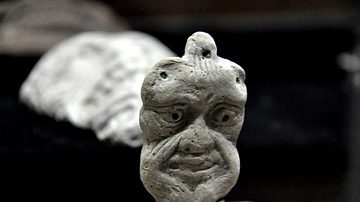
Image
Clay Mask from the Old Babylonian Era
A clay mask depicting a face with acting expressions. Mesopotamian art usually portrays human faces in a poker-like configuration. This one has 3 small holes at the upper part which might have been used to attach it to a necklace with the...